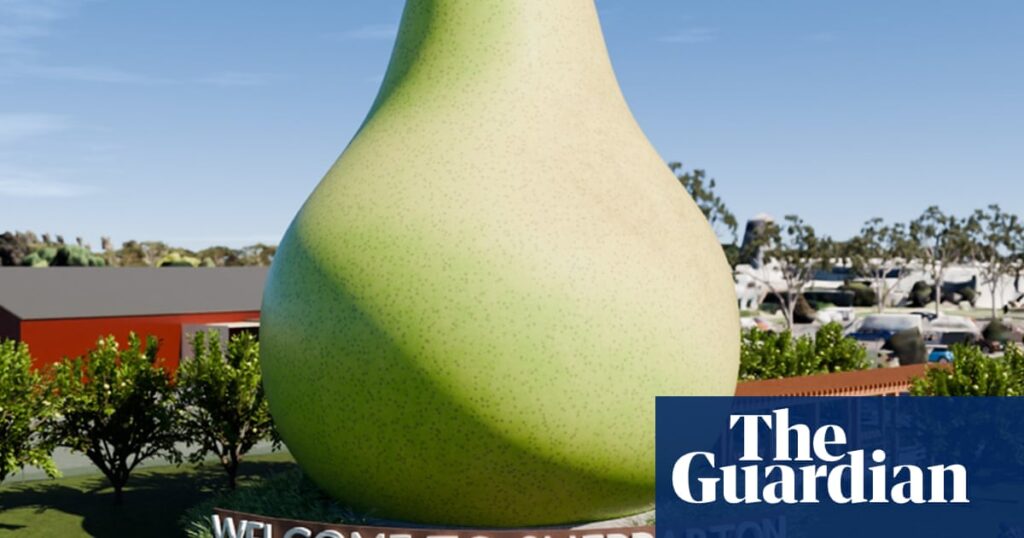
Not content with building the world’s largest Murray cod, the city of Shepparton in Australia is now planning the construction of the biggest pear on Earth. The proposal for a three-storey fruit in the heart of the Goulburn Valley has generated headlines in recent weeks after a business case estimated the construction of the fibreglass fruit alone at just over $1.3 million.
Rocky Varapodio, spokesperson for the steering group behind the project, emphasized that the Big Pear is about more than just its impressive size. “What we would really like to achieve out of this is for it to be a structure that is in the shape of the pear, and looks like a pear, that will symbolize fruit growing in the region,” Varapodio said. “But, more importantly, we want it to be a really good experience when you enter into the pear – we want you to have an exceptional, interactive experience.”
Symbol of Regional Heritage and Growth
Varapodio, the grandson of a postwar Italian migrant who came to the Goulburn Valley seeking work in what was once the center of canned fruit production in Australia, sees the Big Pear as a tribute to the families like his own who have deep roots in the region due to its rich agricultural and industrial history. The semi-retired former fruit grower believes that this monumental agricultural offering will add to Shepparton’s growing list of attractions.
“You wouldn’t call Shepparton a tourist destination,” he said. “But what we are doing now is starting to build up some very good attractions and making it a worthwhile destination to visit.” Among the attractions Varapodio mentioned are the new Shepparton Art Museum, which opened in 2021, the Museum of Vehicle Evolution, and a 16-meter-long Murray cod unveiled 20 minutes south of the city earlier this year.
The Rise of Big Things
If the dream of an oversized pear comes to fruition, Shepparton could not only claim the title of big thing capital of Australia but also help usher in a new golden age of oversized attractions. This is the view of Dr. Amy Clarke, associate dean at the University of the Sunshine Coast and an international authority on big things.
“There’s something to be said for the artistry of a very well-executed, singular big thing that can draw people far more than, say, a handful of subpar big things,” Clarke said.
Clarke, who has mapped the “larger than life roadside colossi” of the world, noted that the scale, smoothness, and shape of the proposed pear would be “difficult to achieve from an engineering and architecture perspective” but “pretty spectacular” if accomplished.
A New Era for Roadside Monuments
Should Shepparton claim the crown of big thing capital, it might not rest easy. Clarke pointed out that Australia is experiencing a renaissance of oversized roadside monuments, partly driven by a rise in domestic travel post-pandemic. Recent restorations of icons such as the Big Pineapple, which harken back to the glory days of the 1970s and 80s, are part of this trend.
New constructions like Big Swoop, a half-tonne magpie pecking a chip in Canberra, and an 11.5-meter-high and 16-meter-long Chamberlain 40K tractor built in Carnamah, Western Australia, are further examples of this resurgence. Clarke mentioned that she is frequently approached for advice on new big thing proposals.
“We’re in a bit of a new kind of golden age of big things,” Clarke remarked.
The Big Pear project represents more than just an oversized fruit; it is a symbol of Shepparton’s rich agricultural heritage and a testament to the region’s ongoing evolution as a cultural and tourist destination. As plans move forward, the city of Shepparton looks to blend history, art, and tourism into a unique experience that could redefine its place on the map.





